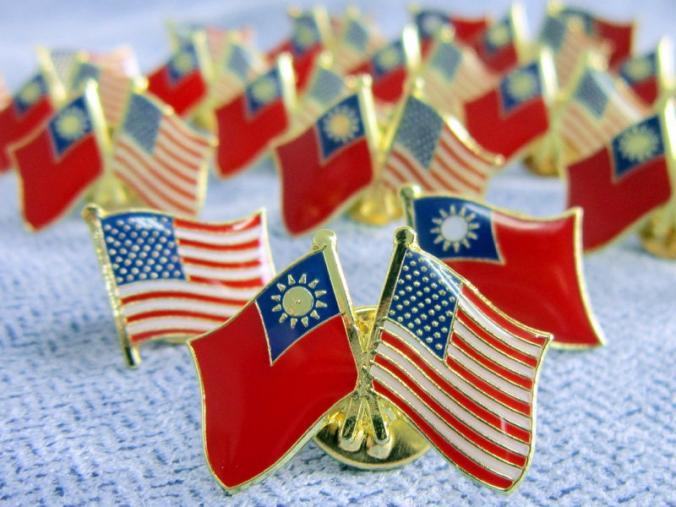
Enacted in 1979 by the 96th United States Congress, the Taiwan Relations Act was created as a response to a shift in diplomatic recognition of the nation of “China” from the Republic of China (on Taiwan) to the People’s Republic of China (in Beijing).
Historical Background
The aftermath of World War II and the Chinese Civil War left the nation of China divided into two groups: the Nationalists (Kuomintang) and the Communists. After the defeat of Nationalist KMT forces in China, in 1949 the KMT-led Republic of China government fled to the island of Taiwan, which had been previously part of Japan since 1895 when the Qing Dynasty ceded it to the Japanese. After the relocation of the ROC government from Nanjing (南京) to Taipei (台北), the communists assumed control over all of mainland China and established the People’s Republic of China with a government based on Marxist-Leninist theory and controlled by the Chinese Communist Party (CCP). To this day, the PRC maintains that the KMT lost the war, and the PRC is the successor state to the ROC, claiming that Taiwan is inherently part of the PRC’s territory.
Even after the ROC’s relocation to Taiwan, most nations around the world maintained diplomatic relations with the ROC as “China”, as a rejection of communism. The PRC suffered diplomatically for over 20 years as it was only able to establish relations with countries such as the Soviet Union, North Korea, Vietnam, neighboring India, and other non-influential nations.
After Richard Nixon’s 1972 visit to the PRC and meeting with Chairman Mao Zedong (毛澤東) and Premier Zhou Enlai (周恩來), relations between the United States and the PRC were becoming normalized, resulting in the signing of the Shanghai Communiqué in which both governments pledged to improve relations, agreed that no country should seek hegemony in the Asia-Pacific region (partly serving as an assurance against the Soviet Union), and that the political status of Taiwan would not be resolved in the short term. The US side acknowledged the PRC’s “One China Policy”, and agreed to lower the amount of military installations on Taiwan. This agreement was the beginning of a power shift in the Cold War which would put the PRC and US together against the Soviet Union.
By 1979, relations had improved to the point that the United States decided to change official recognition of “China” from the ROC to the PRC by signing the Joint Communiqué on the Establishment of Diplomatic Relations by Jimmy Carter. This change in recognition was the beginning of China’s rise as it was soon admitted to the UN, forcing the ROC to abandon its seat as “China” to be replaced by the PRC, and allowing the PRC to participate in the global economy, eventually leading to its market reforms and rapid growth.
What is the TRA?
After the change in recognition from the ROC to the PRC, the United States government acted swiftly to pass legislation that would, in effect, continue to treat the ROC government as a separate entity, albeit in an unofficial manner. The Taiwan Relations Act was passed in 1979 and provided many assurances.
The name used to refer to the territory under control of the ROC would be called simply “Taiwan”, and would include the territories of Taiwan (Formosa Island), minor islands off Taiwan’s coast, as well as the Penghu archipelago. The term “Republic of China” would no longer be used in favor of "governing authorities on Taiwan”.
The act allows for a special authority created specifically for Taiwan known as the American Institute in Taiwan (美國在台協會) to serve as a defacto embassy, and provides for Taiwan to be recognized under United States law as a sovereign entity, regardless of an absence of official diplomatic relations.
The act also obligates the United States to assist Taiwan in maintaining defense capabilities against the threat of an invasion from the PRC. As recently as 1996, missiles were shot from China toward Taiwan as a warning to the Taiwan President Lee Teng-hui who was in the US giving a speech at a university as the PRC saw this as a violation of the “One China Policy”. The United States then sent two aircraft carrier battle groups into the Taiwan Strait in preparation for a defense for Taiwan, dispelling the conflict. The US regularly provides arms sales to Taiwan, although many in Taiwan criticize the modernity of the equipment provided.
As an addition to the Taiwan Relations Act, each president since Reagan and the United States State Department have repeatedly reaffirmed a set of guidelines known as the “Six Assurances”, solidifying the terms of the Taiwan Relations Act, which stipulate that the PRC will have no influence on US-Taiwan relations, would not alter the terms of the TRA, would not set a date to terminate arms sales, would not mediate between Taiwan and the PRC, would not recognize the PRC’s claims over Taiwan, and would not alter its position about the sovereignty of Taiwan as this is to be determined by both Taiwan and the PRC.